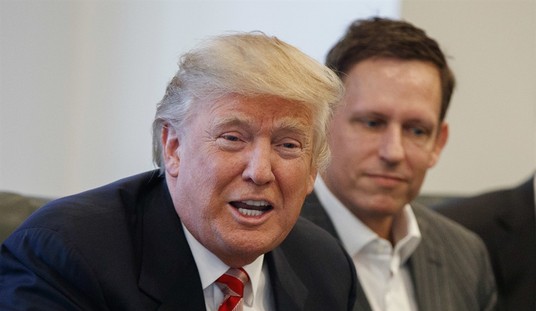
This Thursday, Dec. 29, 2016 photo shows an Israeli Air Force F-15 plane in flight during a graduation ceremony for new pilots in the Hatzerim air force base near the city of Beersheba, Israel. Anti-aircraft missiles were launched from Syria into Israeli-controlled territory early on Friday, following a series of Israeli airstrikes inside Syria, the Israeli military said. The military said its warplanes struck several targets in Syria and were back in Israeli-controlled airspace when several anti-aircraft missiles were launched from Syria toward the Israeli jets. (AP Photo/Ariel Schalit)
On Friday, a volley of about 30 107mm rockets hit a base occupied by US and Iraqi personnel near the Iraqi city of Kirkuk. One Defense Department contractor was killed and several other Americans were lightly wounded.
U.S. intelligence officials tell me they believe Iranian-back militias to be the culprit for the rocket attack on K-1 Base in Kirkuk, killing a Pentagon contractor and wounding several U.S. service members and Iraqi personnel on-site. Roughly 11 to 14 rockets struck the base.
— James LaPorta (@JimLaPorta) December 27, 2019
In a very short period of time, US intelligence has point the finger not at ISIS by at the Iranian-sponsored Iraqi militia, Kataib Hezbollah. Kataib Hezbollah is a wholly controlled entity of the Quds Force of Iran’s Islamic Revolutionary Guards Corps. It has been fighting US troops since about 2007, but, given the strategic imperative that ISIS be wiped out, this terror group has been operating with our ally, the Iraqi Army while also actively fighting Syrian forces opposed to Bashar Assad.
Kataib Hezbollah, from IRGC franchise to target of US airstrikes, my look at the group https://t.co/Lf73GygT9H
— Seth Frantzman (@sfrantzman) December 30, 2019
One can’t escape the feeling that one of the motivations behind the attack was to test US resolve. Iran, Russia, and China allegedly began joint naval maneuvers in the Persian Gulf on Friday and this attack might have been calculated to see how we’d respond with hostile naval forces in the area.
Whatever the rationale, an answer wasn’t long in coming.
“Precision defensive strikes” were conducted against five sites of Kataeb Hezbollah, or Hezbollah Brigades, Defense Department spokesman Jonathan Hoffman said in a statement earlier Sunday.
The U.S. blames the militia for a rocket barrage Friday that killed a U.S. defense contractor at a military compound near Kirkuk, in northern Iraq. Officials said as many as 30 rockets were fired in Friday’s assault.
Esper said the U.S. hit three of the militia’s sites in western Iraq and two in eastern Syria, including weapon depots and the militia’s command and control bases.
U.S. Air Force F-15 Strike Eagles carried out the strikes and all the aircraft safely returned to their home base, Esper said. At the ammunition storage facilities that were struck, significant secondary explosions were observed.
This is the first time that the US has launched a significant retaliatory attack against Iranian assets in the region. Despite being unhappy with Iran, President Trump has conducted a very measured policy against them. For instance, in June, when the Iranians shot down a US drone in international airspace, President Trump refused to authorize the retaliatory raid that had been proposed by the National Security Council on the grounds that there had been no loss of life.
Tony Badran, a research fellow at the Foundation for Defense of Democracies, called the attack an “important moment in the U.S.’s Iraq policy.”
“Especially over the past decade, counterterrorism has not only encouraged inertia, but also has served as a smokescreen to put the U.S. in a de facto alliance with Iran, including the Obama administration providing Iranian-led militias with cover and support for ground operations,” he added. “The Trump administration has been slowly moving away from that, first through quiet acquiescence to ti Israeli strikes and now by retaliating directly against attacks by these militias. This change in posture is as necessary as it is overdue.”
(Just a note here, Tony Badran, @AcrossTheBay on Twitter, is someone you MUST follow if you are trying to keep up on Syria/Lebanon/Iraq/Iran.)
This all is taking place as the Iranian economy grinds to a halt under the pressure of determined US economic sanctions and open rifts are appearing in the Iranian ruling claque. Striking at the Iranian proxy militia nearly has to draw a response of some kind from Iran. If it doesn’t try to extract some kind of price for the bombing, its proxy organizations are going to start wondering which way things are going in the region. Iran, though, can’t really afford to act as its military is more of a barking shambles than it usually is and it doesn’t have the wherewithal to replace materiel lost in a military confrontation with the US. Not a great position to be in.













Join the conversation as a VIP Member